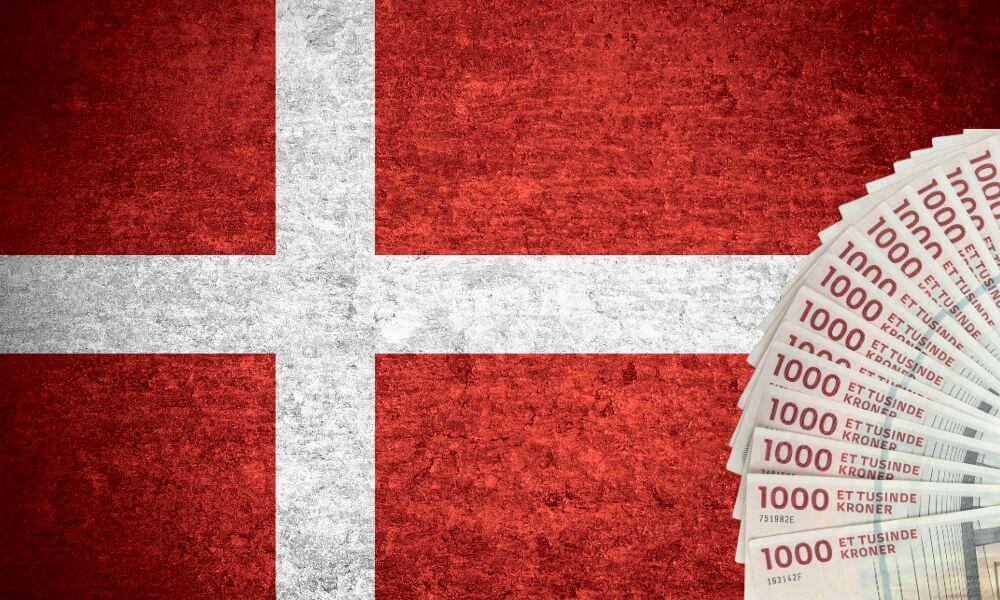The currency of Denmark is the Danish krone. This is the nation’s official currency and the plural is kroner. Most Scandinavian nations use krone rather than the Euro even when they are in fact EU member states, like in Denmark’s case. One krone is subdivided into 100 øre and there are eleven denominations of øre.
Coins in Denmark have been an important part of their history since the earliest period that we could call this part of the world Denmark.
A somewhat simplistic interpretation of the desire to retain the krone rather than to move to the euro is just that they wish to preserve this aspect of their heritage; though there are of course other reasons involved.
Let’s find out more.

What is the currency of Denmark?
The currency of Denmark is the Danish krone.
This is also, then, the currency of Greenland and the Faroe Islands. In its modern form it was first introduced in 1875, and it has the ISO code of DKK.
In English, you may sometimes hear the currency referred to as the Danish crown, since the word “krone” just means crown in Danish.
Krone coins have been minted in Denmark for the last three hundred years in something approaching their modern form, though coins in Denmark go much further back than that.
One Danish penny, struck sometime between 825 and 840 AD, is the oldest known Danish coin.
It was not, however, until the rule of Harald Bluetooth that minting was systematized in the 10th Century.
Coins at this distant point in history were a very important royal marker, and keeping close control of the minting of coins meant that anyone passing through your territory must use your currency to trade.
The modern krone, then, replaced the older rigsdaler.
At this point, the krone still adhered to what is known as the gold standard.
The gold standard was and in some places still is a system by which the value of a currency was tied to an equivalent amount of gold held somewhere in the banks or otherwise. 2,480 kroner, in 1875, was equivalent to about a kilogram of gold.
It was not until 1931 that Denmark permanently abandoned the gold standard.
Today, the printing of the kroner is all outsourced, and the last banknotes printed by the National Bank were printed in 2016.
Though they are an EU member state, in a referendum they voted to reject the official introduction of the Euro as their official currency—but given their geographic location, is the Euro accepted in Denmark?
Is the Euro accepted in Denmark?
Euros are not accepted in Denmark, is the short answer.
Given their membership in the EU and their neighbouring nations which do use the Euro, you may find that there are some places in which you can use Euros, but there is no sense in banking on this.
Euros are not legal currency in Denmark and so in any official capacity you will not be able to use Euros in Denmark.
Denmark has been an active member of the EU since 1973, though the Euro has never been adopted.
The nation’s economy, nonetheless, has been extremely strong, and their internal market is remarkably well-functioning. In the referendum, around 46% voted yes to the introduction of the Euro, so it was only defeated by a relatively slim margin.
In future generations, further referendums may be taken and they may switch to the Euro, but there are plainly no plans to do so anytime soon.
It’s easy to assume when travelling to Denmark that they will use the Euro and that is what you’ll need to take.
But you will not be able to pay for things with the Euro in Denmark, so you’ll need to make a plan for converting your currency.
What is the best currency to take to Denmark?
Depending on where you are in the world, you may be able to get good rates for currency conversion on Danish kroner in your own nation—certainly if you are in Europe.
So, in that case, you may simply be able to get your kroner before you leave.
On the other hand, taking Euros into Denmark to then have them converted into kroner may also be a good option.
If you are outside Europe, US dollars are certainly a good option for conversion to kroner on arrival.
As with just about anywhere in the world, you will get good rates against the dollar.
Is Denmark expensive?
Generally speaking, yes, Denmark is quite expensive.
Its population is very well paid and so relative purchasing power means that goods can be more expensive.
That said, though, they are not by any means the most expensive of the Scandinavian countries and you do not need to expect to spend an awful lot of money to go on holiday in Denmark.
Also, the fact is that some areas are much more expensive than others; Copenhagen, naturally, is a great deal more expensive than smaller towns in the more rural areas. It’s all a relative question, really.
So, you’ll want to think about the best options for conversion depending on where you are in the world; you may get better exchange rates by buying your kroner first or waiting until you reach the country.
Either way, though, you must have kroner with you, and remember that you cannot use Euros in the vast majority of Denmark.

